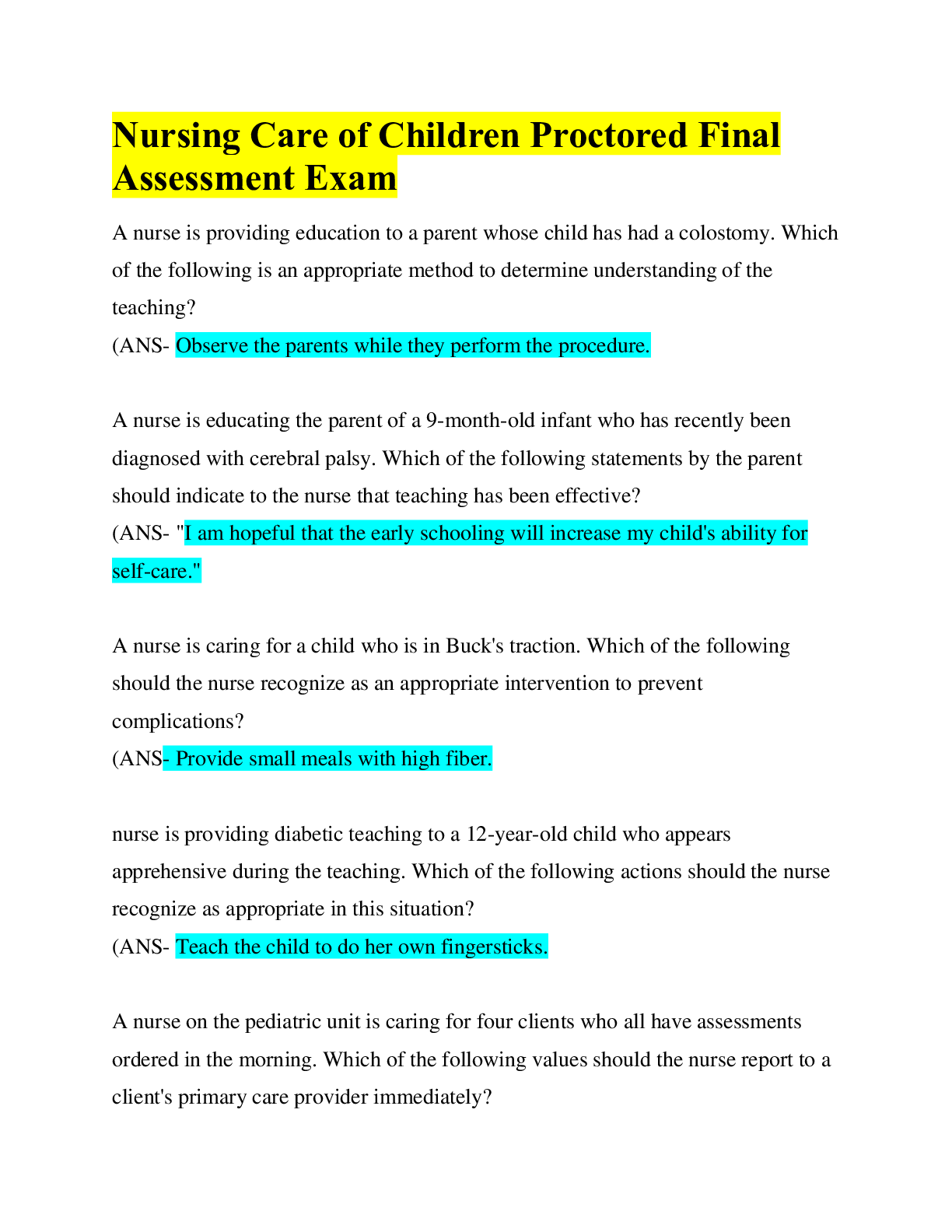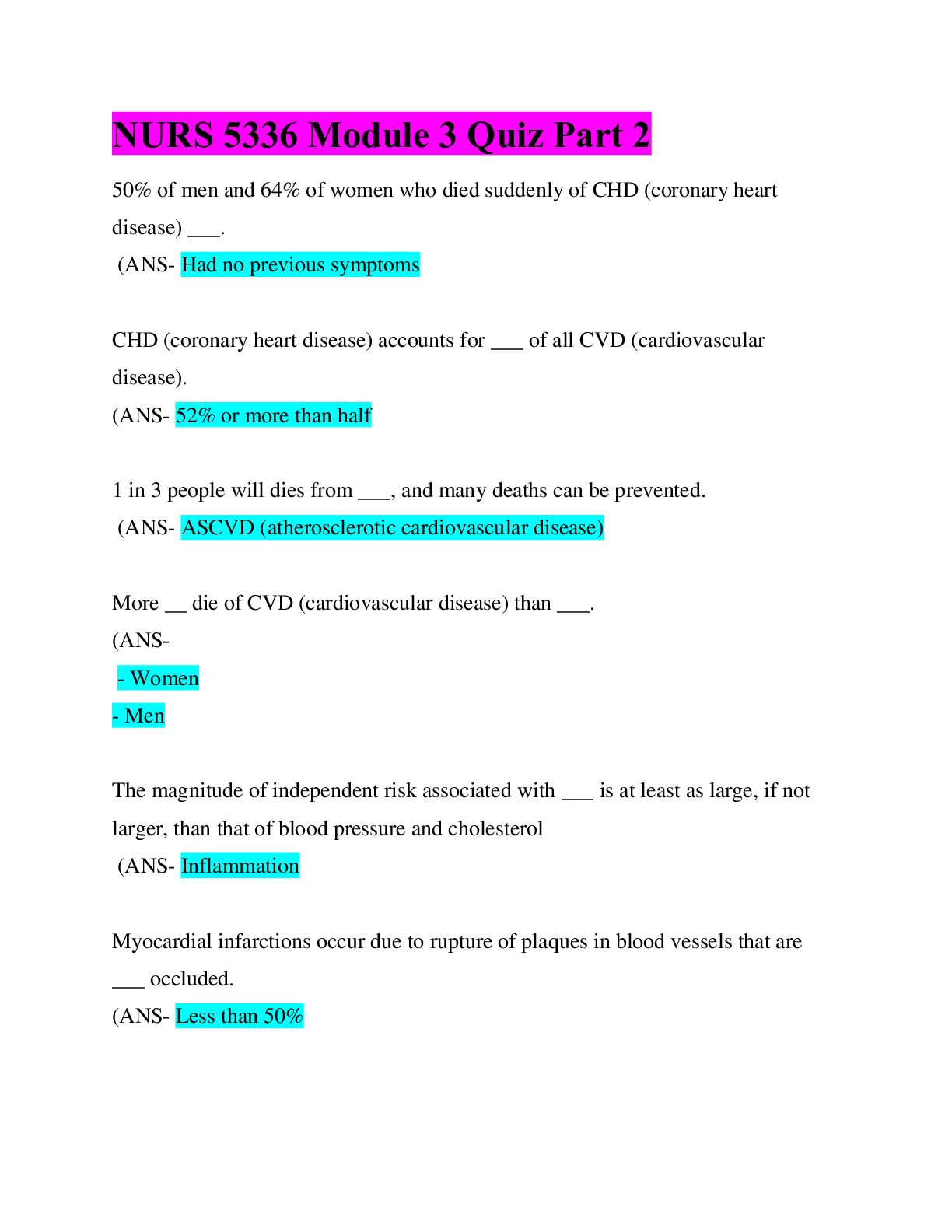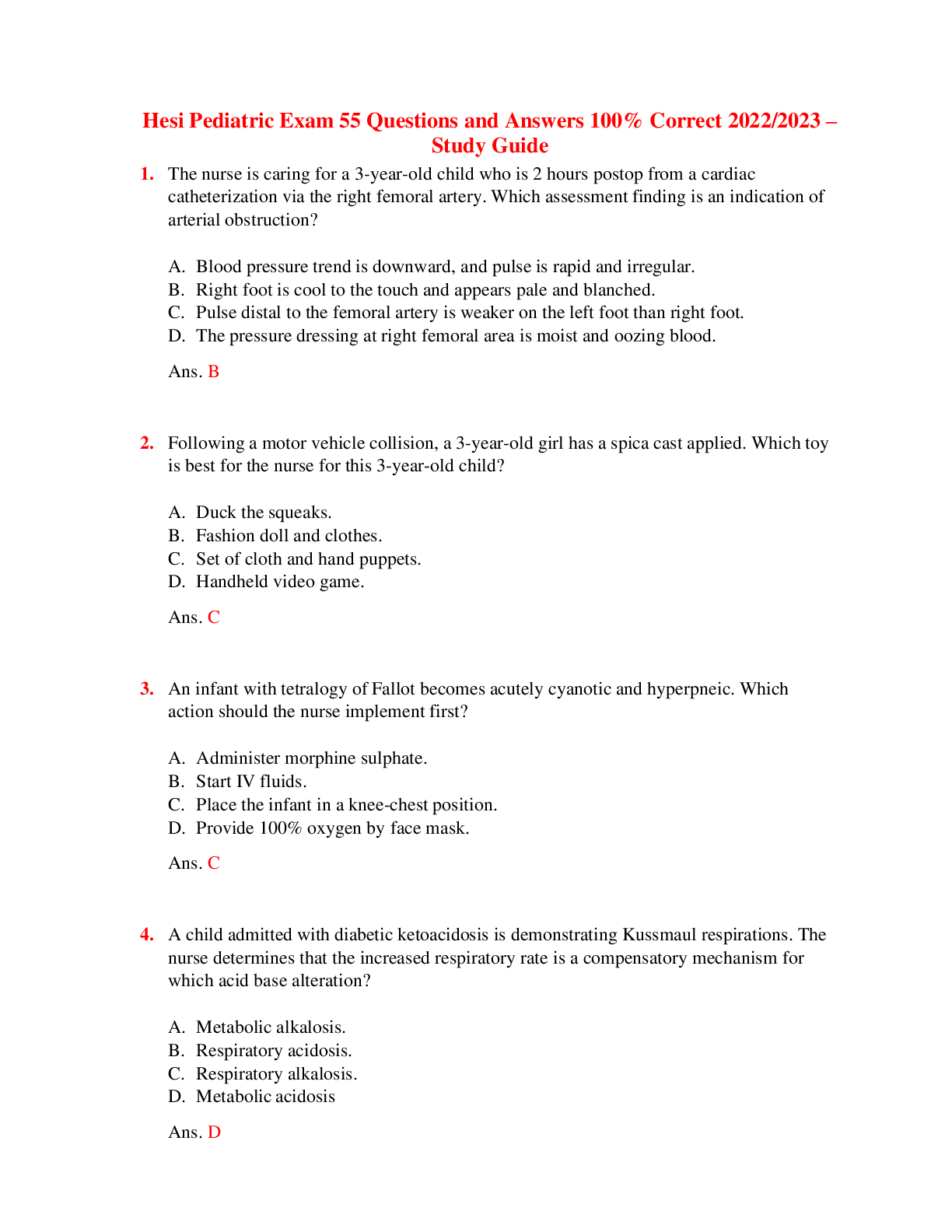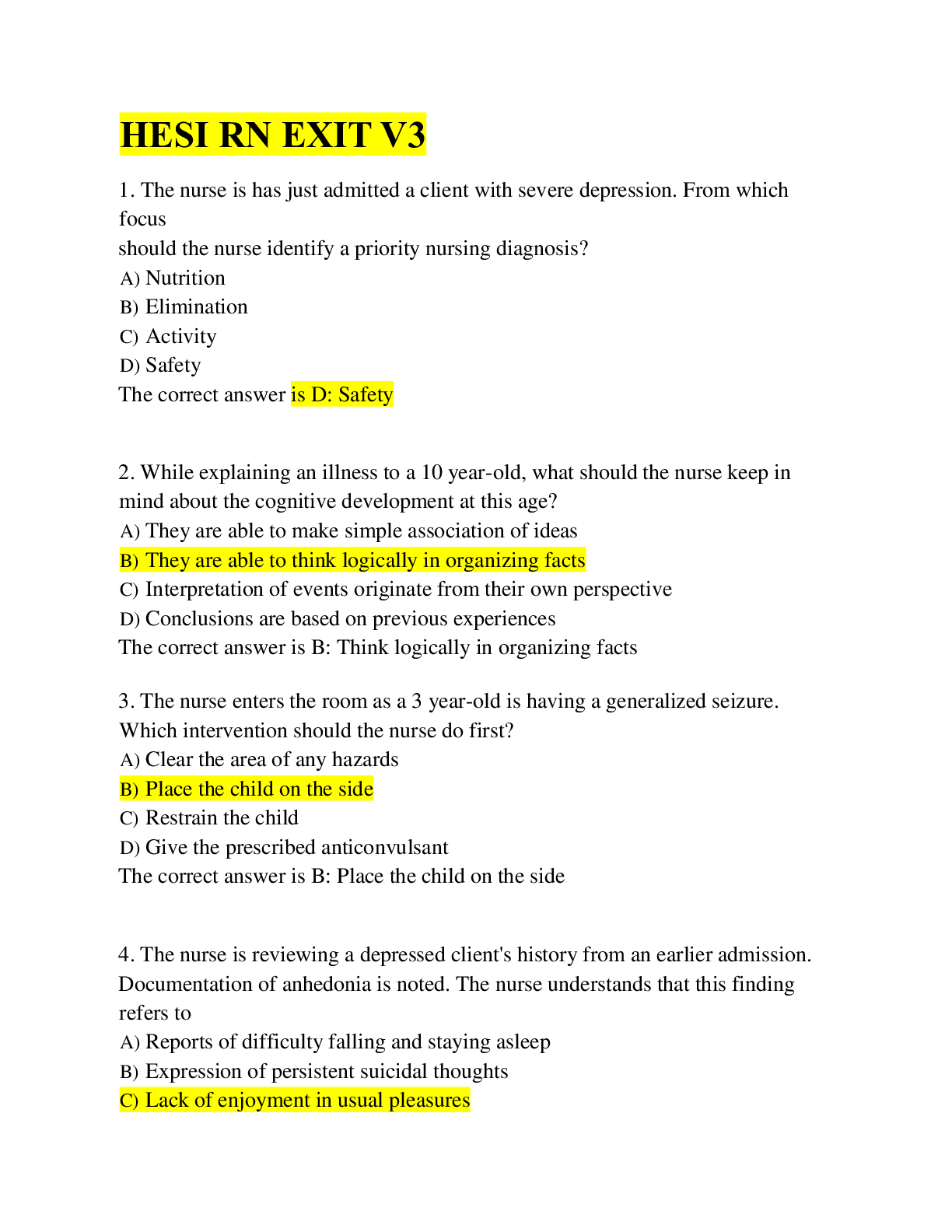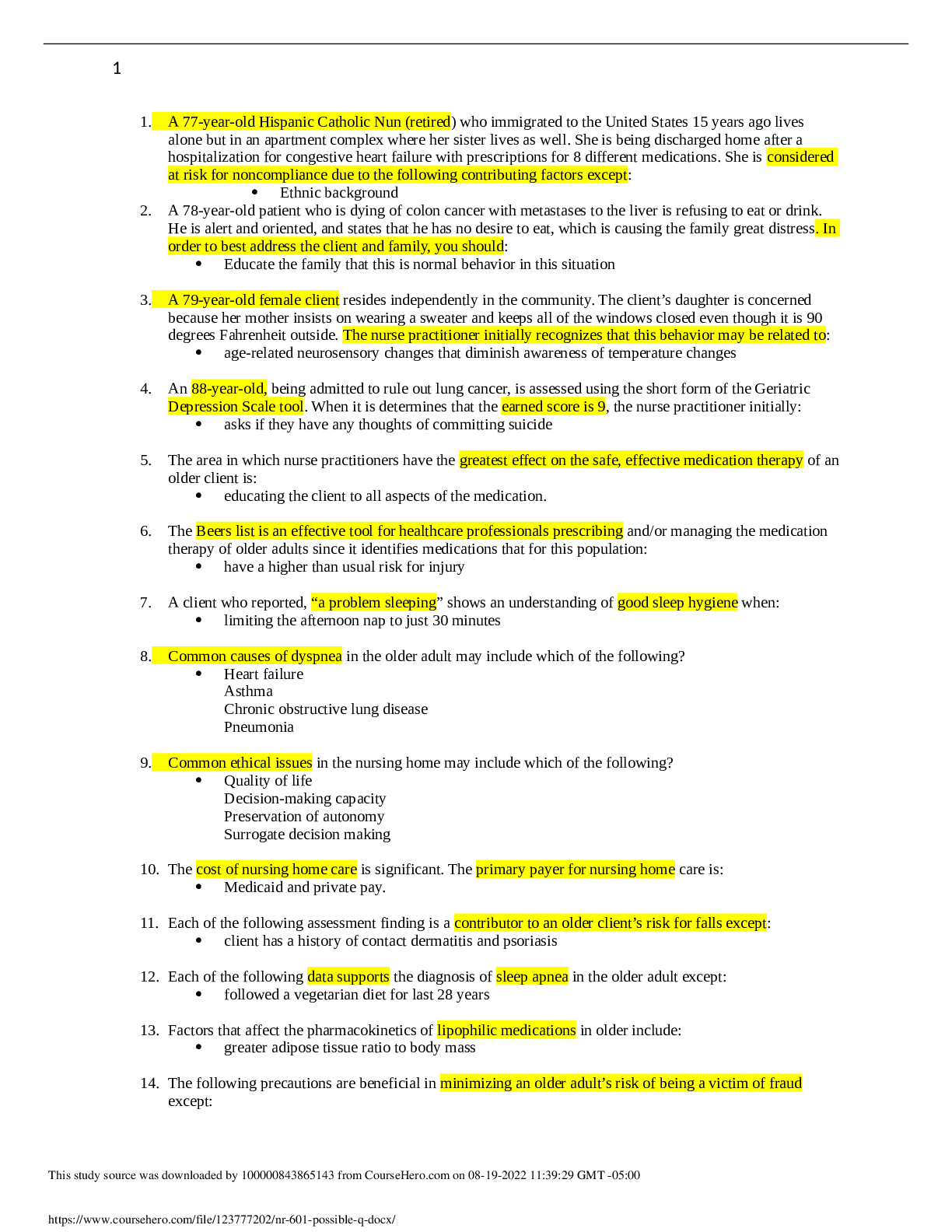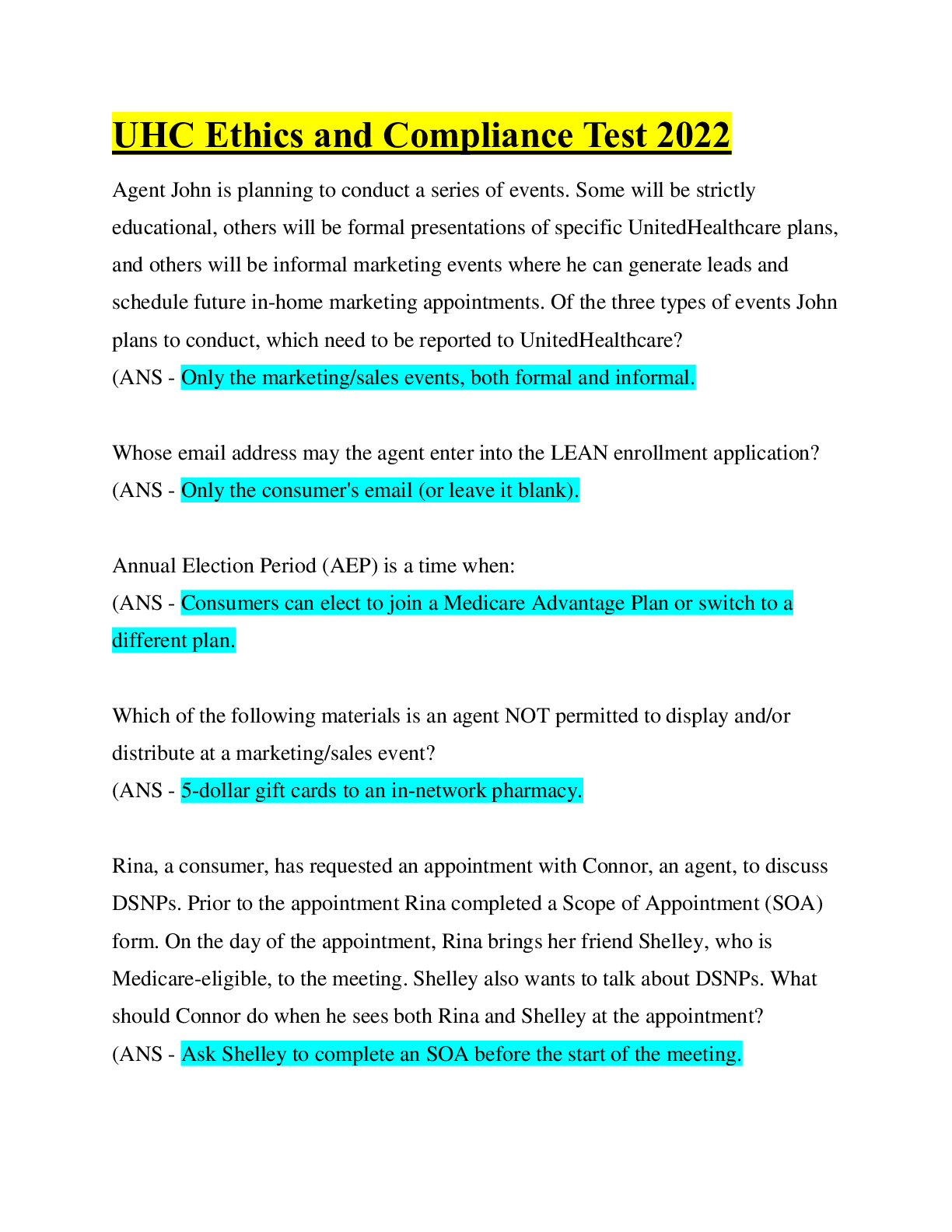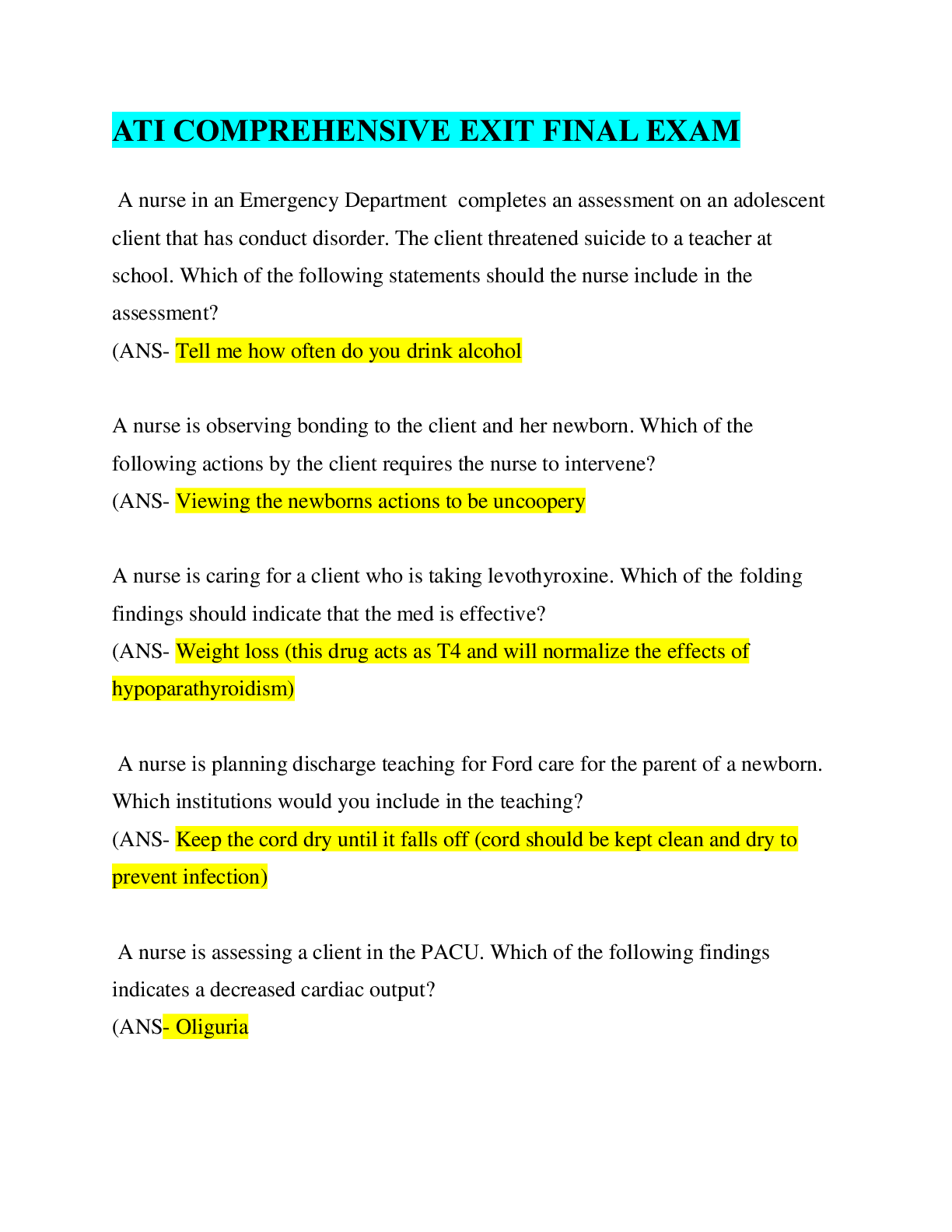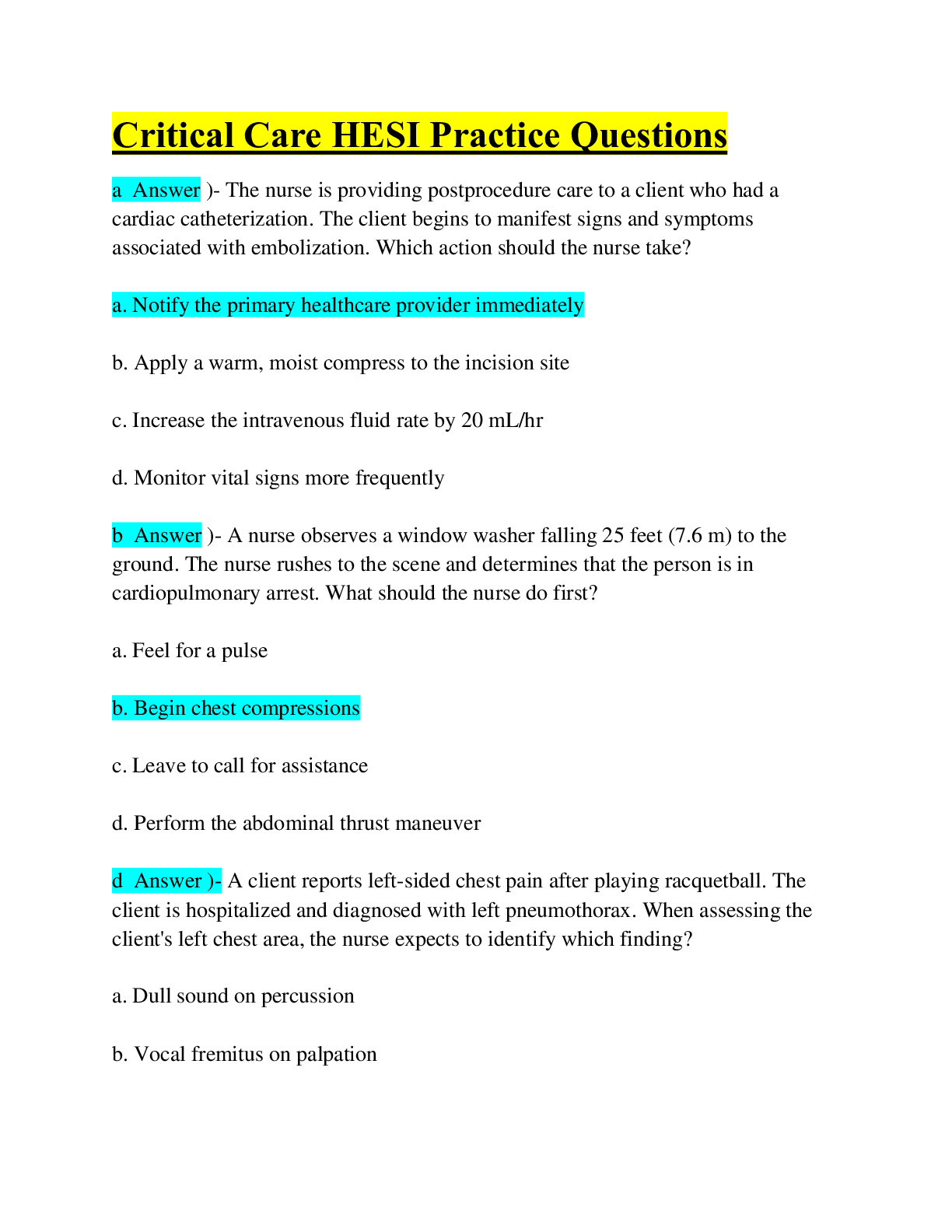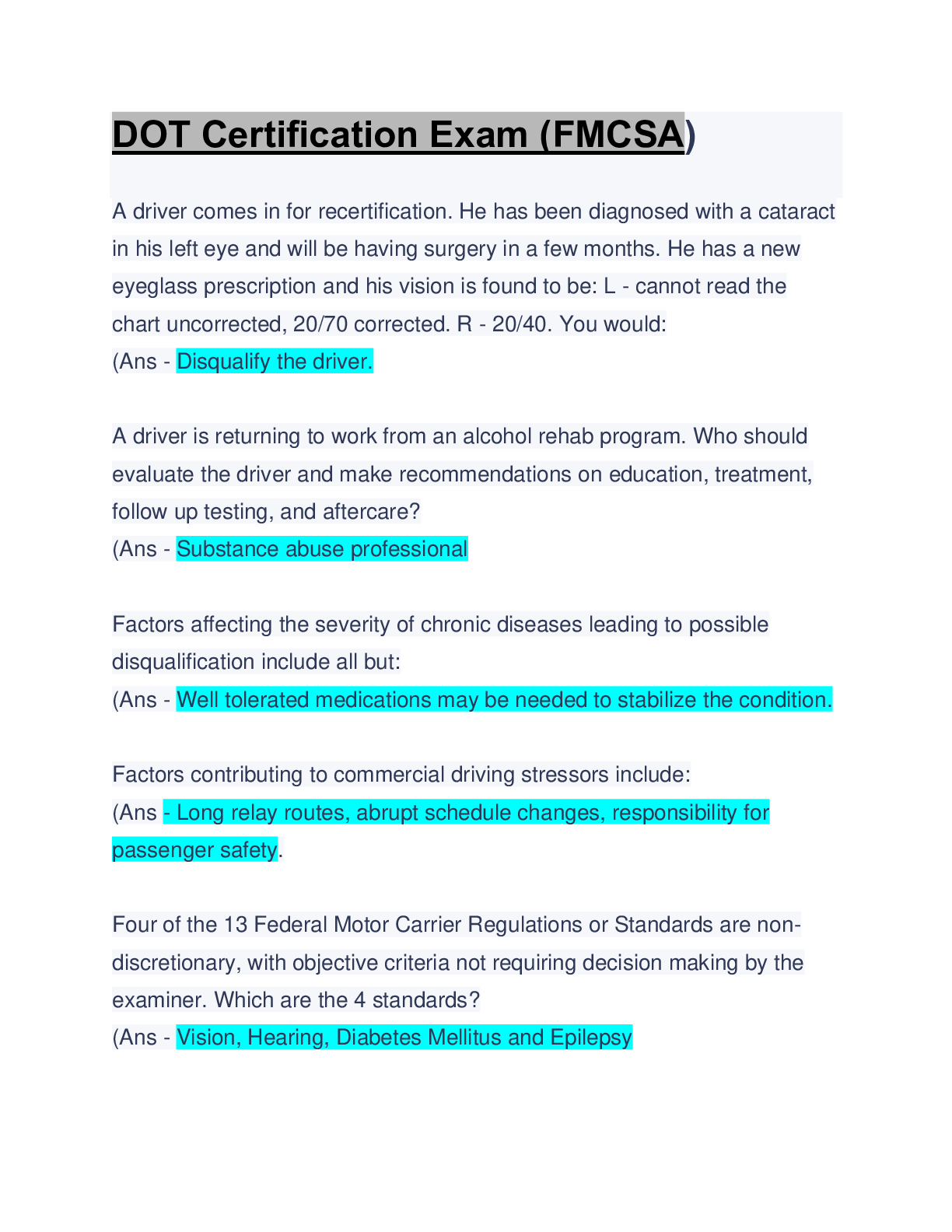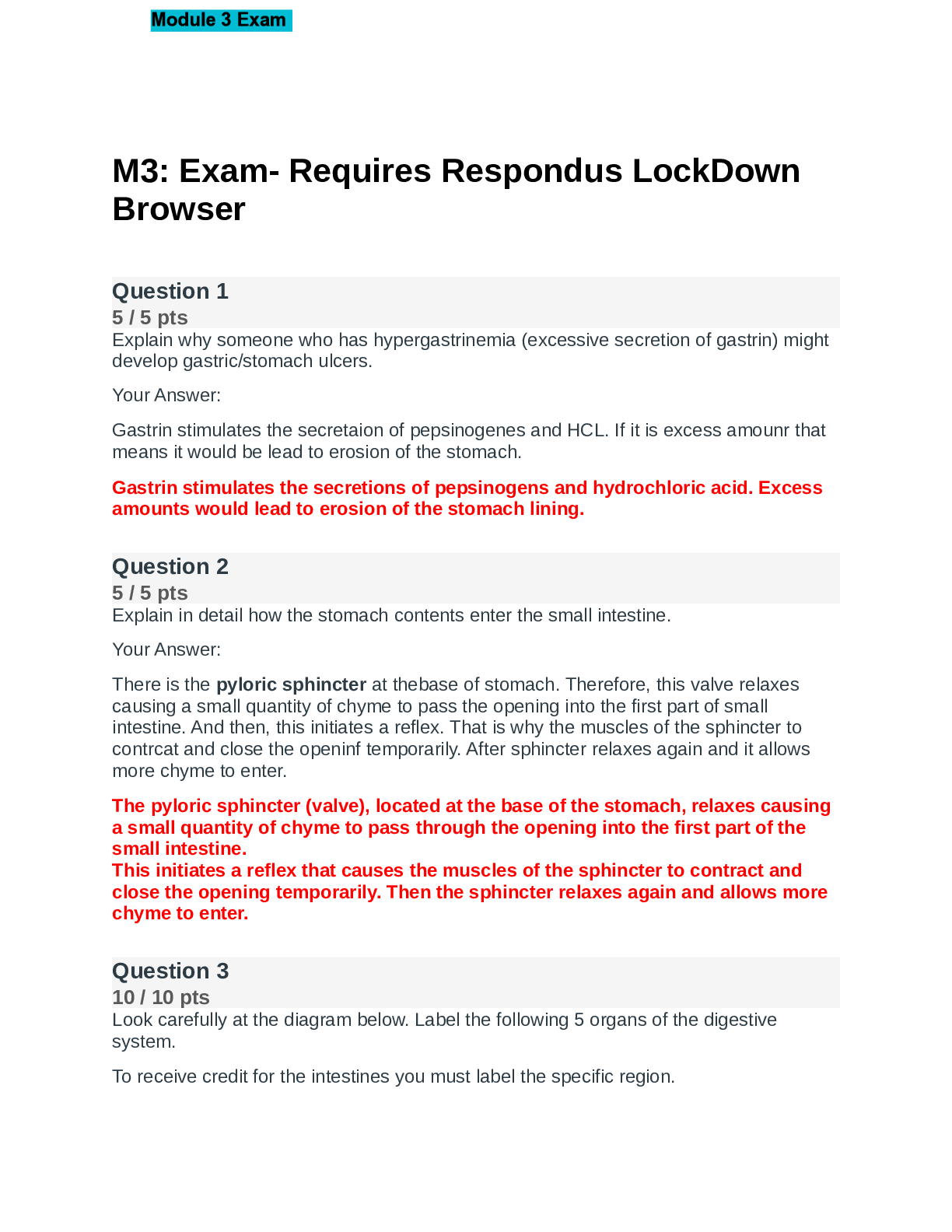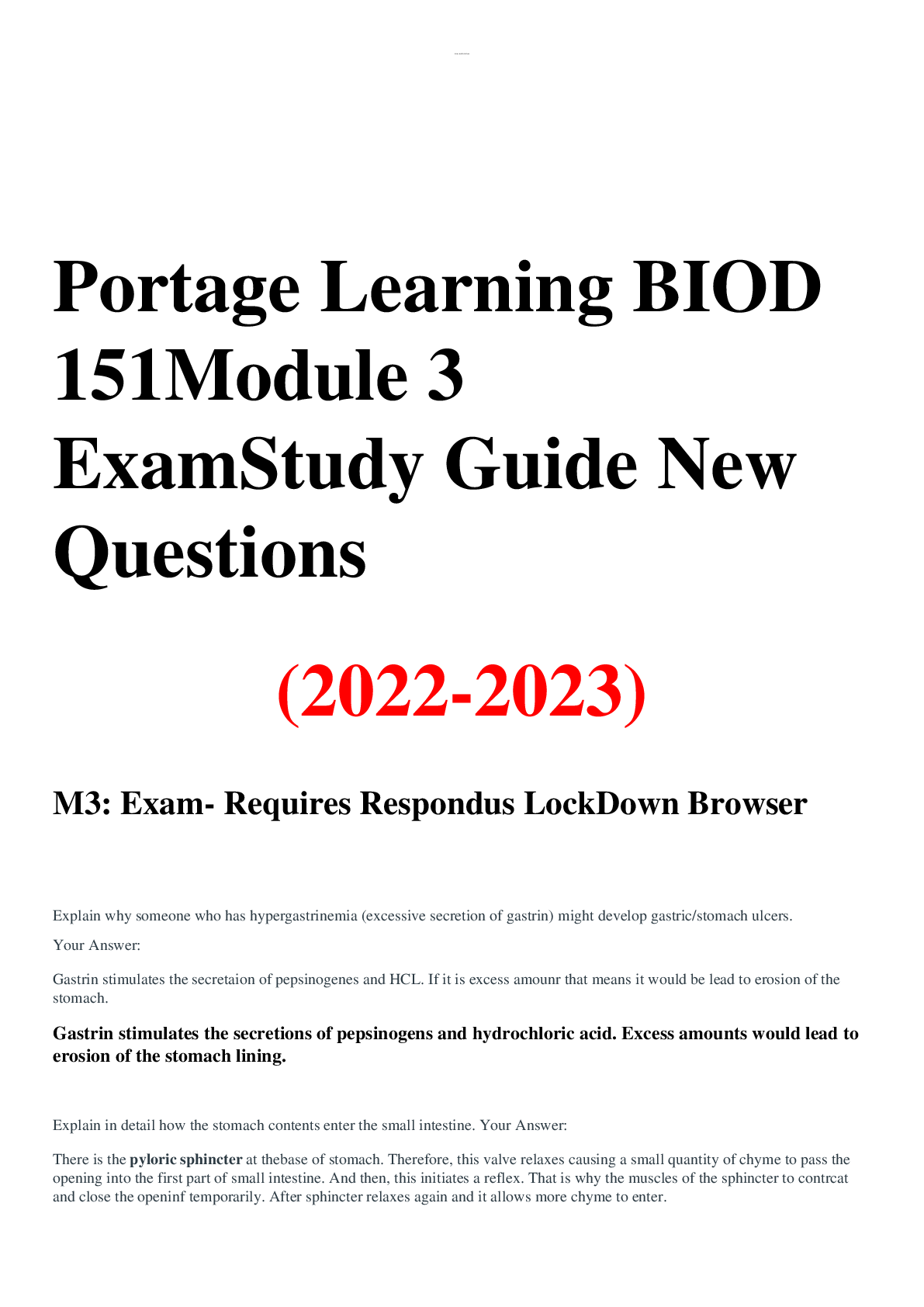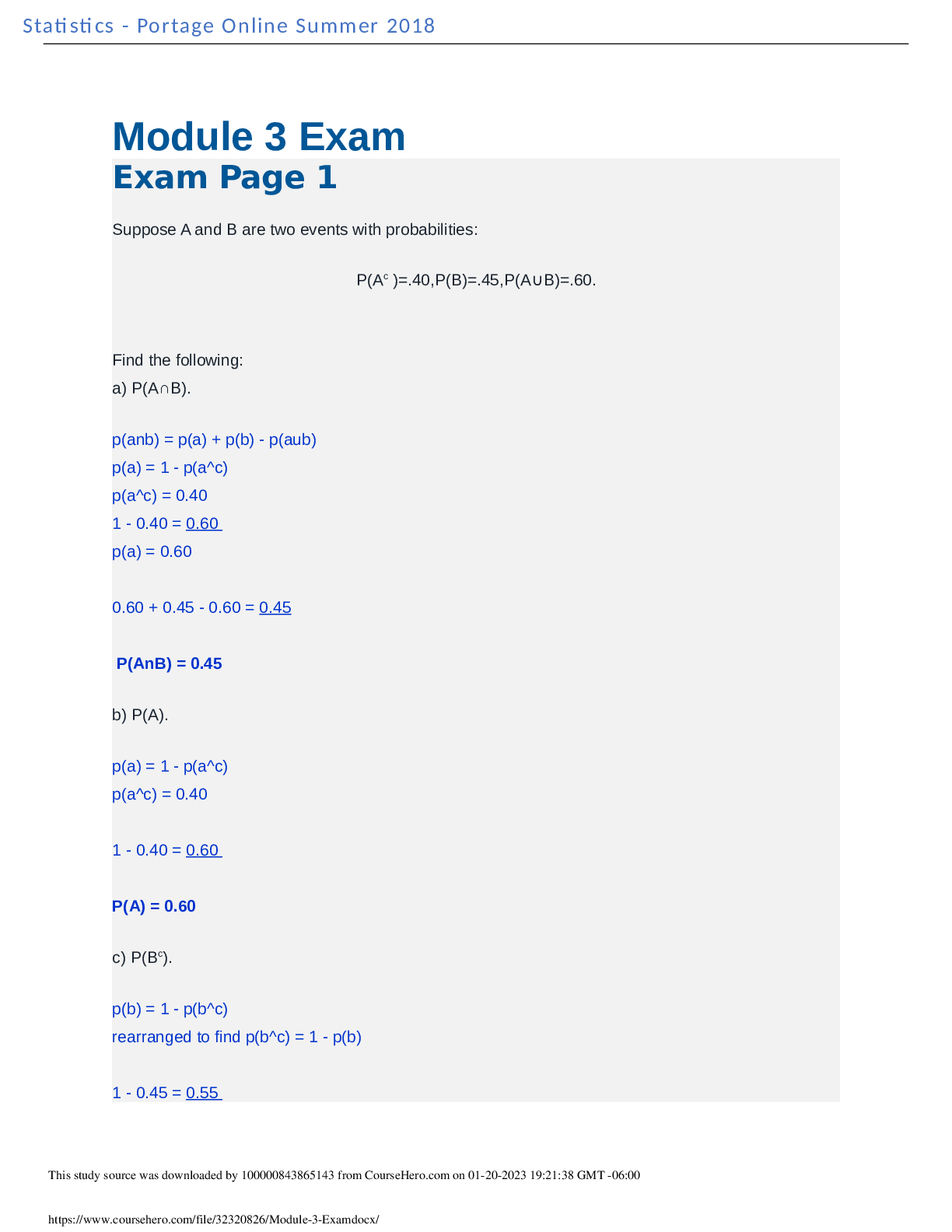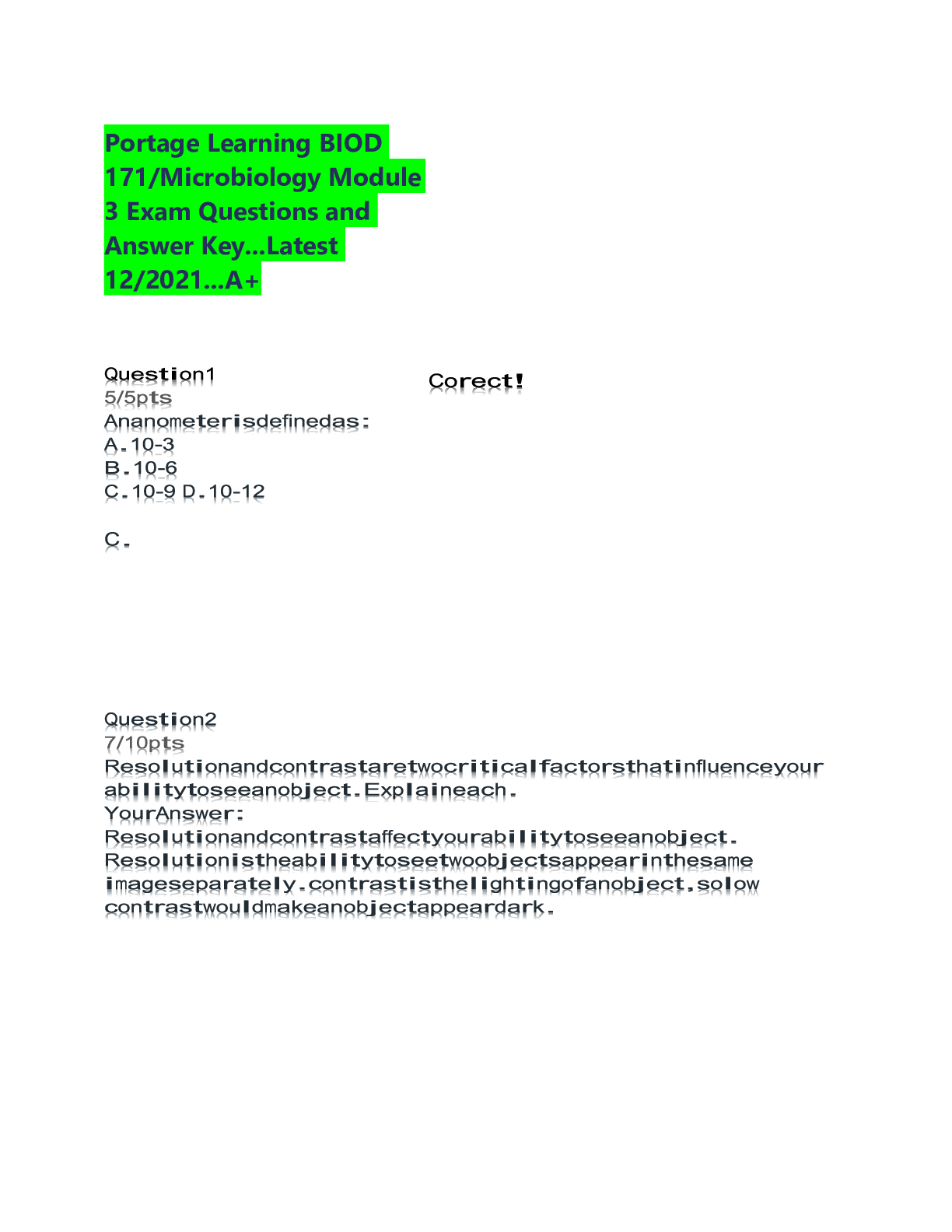Health Care > EXAM > EMT Test 3 review, EMT module 3 Exam Review: Questions & Answers: 100% Verified (All)
EMT Test 3 review, EMT module 3 Exam Review: Questions & Answers: 100% Verified
Document Content and Description Below
During your assessment of a patient who experienced blunt trauma to the abdomen, you notice bruising around the umbilicus. This is a sign of: Answers: A. intra-abdominal bleeding. B. a severe li... ver laceration. C. rupture of a hollow organ. D. a ruptured spleen. (Ans- A A patient who presents with profound cyanosis following a chest injury: Answers: A. is most likely experiencing severe blood loss. B. should be placed in Trendelenburg position. C. requires prompt ventilation and oxygenation. D. has most likely experienced a ruptured aorta. (Ans- C The hormone responsible for the actions of the sympathetic nervous system is: Answers: A. aldosterone. B. epinephrine. C. thyroxine. D. insulin. (Ans- B When splinting an injury of the wrist, the hand should be placed: Answers: A. into a fist. B. in an extended position. C. in a straight position. D. in a functional position. (Ans- D An organ or tissue may be better able to resist damage from hypoperfusion if the: Answers: A. systolic arterial blood pressure is at least 60 mm Hg. B. heart rate is maintained at more than 100 beats/min. C. body's temperature is considerably less than 98.6°F (37.0°C). D. body's demand for oxygen is markedly increased. (Ans- C The phrenic nerves control the diaphragm and exit the spinal cord at: Answers: A. C1 and C2. B. C3, C4, and C5. C. C3 and C4. D. C1, C2, and C3. (Ans- B Patients with full-thickness (third-degree) burns generally do not complain of pain because: Answers: A. subcutaneous vessels are usually clotted. B. the nerve endings have been destroyed. C. blister formation protects the burn. D. they are generally not conscious. (Ans- B The lower jawbone is called the: Answers: A. zygoma. B. mastoid. C. mandible. D. maxillae. (Ans- C In a patient with a head injury, hypertension, bradycardia, and Biot respirations indicate: Answers: A. herniation of the brain stem. B. internal bleeding in the chest. C. an underlying skull fracture. D. decreased cerebral blood flow. (Ans- A Which of the following is a severe burn in a 2-year-old child? Answers: A. Superficial burn that covers 25% of the BSA B. Any full-thickness burn, regardless of its location on the body C. Partial-thickness burn that covers 10% of the BSA D. Any burn that involves the arms, legs, or posterior part of the body (Ans- B [Show More]
Last updated: 10 months ago
Preview 1 out of 79 pages

Reviews( 0 )
Document information
Connected school, study & course
About the document
Uploaded On
Jul 14, 2023
Number of pages
79
Written in
Additional information
This document has been written for:
Uploaded
Jul 14, 2023
Downloads
0
Views
63




